Float fishing: A guide to coarse fishing with floats
With an obvious visual appeal, float fishing is one of the most popular angling methods. But with such a bewildering variety of floats, where do you start? Dom Garnett clears things up as he explains which floats to use, the best rig set up and tips for spotting bites and catching more fish.
For generations of anglers, float fishing has been the favourite method. The writer HT Sheringham summed up its joys by saying the float was “pleasing in appearance, and even more pleasing in disappearance.” This still rings true today, whether you cast a delicate stick float or a pike bung.
Perhaps the biggest challenge for the angler is making the right choice, given the huge selection of floats available. This quick guide is an attempt to steer you in the right direction and share some of the joys and benefits of successful float fishing.
Why use a float for fishing?
Apart from the obvious pleasure of seeing the thing dip, why should we opt for a float in the first place? The broadest answer is that the float achieves things other presentations don’t. If the fish we want to catch like the bait in mid water as it falls, or in the current, a float is the answer. But for bottom fishing too, the float will often provide greater sensitivity than rod tips or bobbins.
A bait fished on a leger rig can often move several centimetres without registering any sort of bite you would hit, after all! Compare that to a carefully shotted float, just touching the bottom. Get your setup right and you have a fantastically sensitive setup.
Furthermore, on lakes where pretty much everyone legers their bait (cough, cough, did someone mention carp?) the float gives you something different. In particular, it gives you a slow fall of the bait, sensitive bite indication and the line and hook at a completely different angle to the usual self-hooking rigs. Furthermore, a float will enter the water very gently on the cast, compared to say a three ounce lead or a swimfeeder.
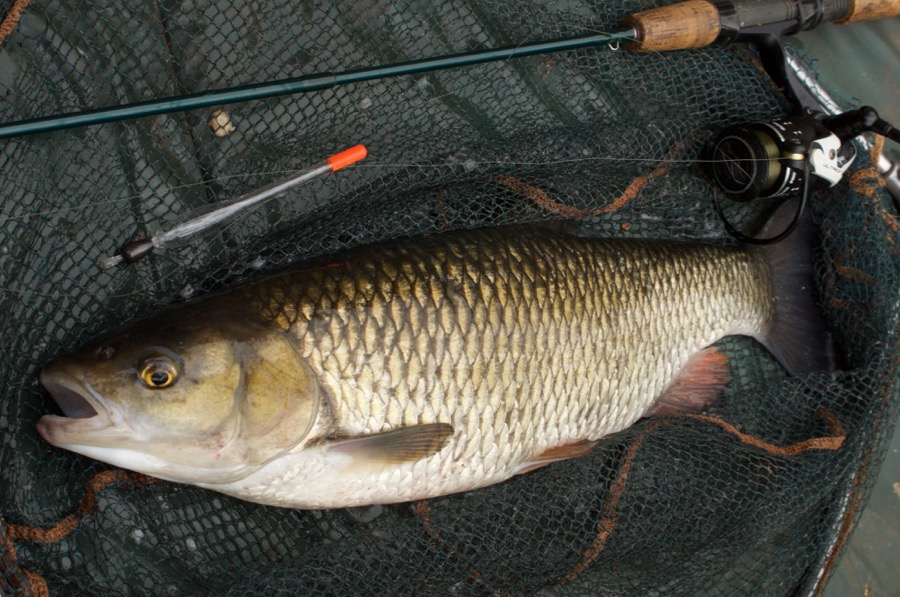
A simple waggler float and slow sinking bait fooled this chub.
Understanding the different types of coarse fishing floats
Waggler
Attached bottom end only, this is a great all-rounder, especially on stillwaters such as lakes and canals. It’s very easy to set up, too. All you need to do is thread the float on the line and pinch it in place with split shot. At least two thirds of the weight needed to make the float sit properly (or “cock”) should be placed right by the float. This is because too much weight down the line tends to cause tangles.
You will find lots of different waggler float types these days. Don’t panic if you’re new to this, because most fall into some simple categories. Here they are, explained in non nonsense terms:
- Straight waggler: This is the simplest kind. Just a straight length of plastic or quill. The tip is relatively thick, so this is a good all rounder that will handle wind or slightly bigger baits. If in doubt, start with one of these.
- Insert waggler: Some wagglers get thinner at the end- often by means of a slender tip, inserted at the top. These offer greater sensitivity, hence they are good for shy biting fish like crucians, roach and skimmers. In a strong flow or windy day, they might get pulled under too easily, but for calm days and cold conditions when the fish might bite gently, the insert waggler is a winner.
- Loaded waggler: Some wagglers have weight actually incorporated into their base. This makes them cast really well, like a dart! Weight for weight, you can send one of these further than an unweighted float. This makes them ideal when you need more distance. You’ll also see bigger versions often called “pellet wagglers”- which are for carp. On fisheries that see a lot of pellets, the “plop” of one landing can actually attract the fish!
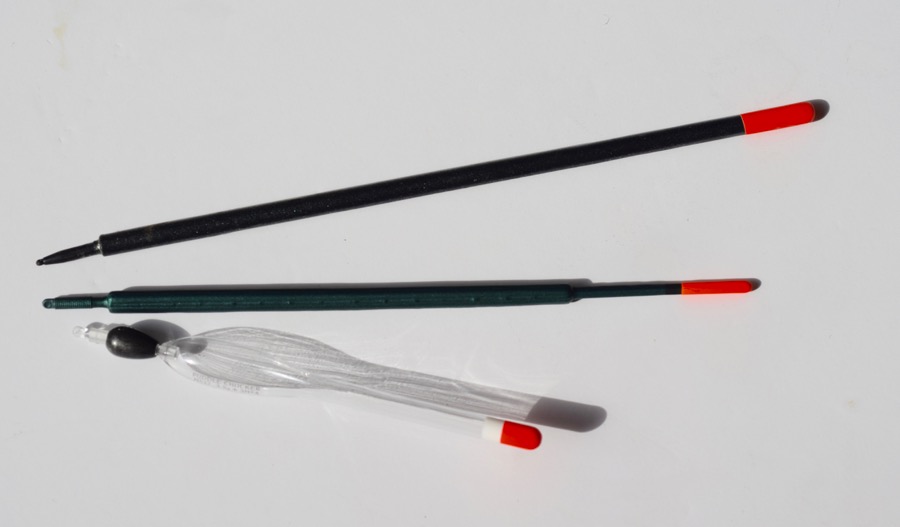
A straight (top), insert and loaded waggler.
Understanding different stick floats
Attached by two or three “float rubbers” this is first choice for running water. The size and design of float will depend on the depth and strength of the current. Above we have a traditional stick float, modern metal stemmed float and a chubber, for big baits and boiling currents.
For the newcomer, the best advice is to use a float that is reasonably heavy (say 4AA+) because this makes casting and control easier. Float choice tends to be dictated by current and conditions however. For slower water and small baits like maggots, you might use quite a delicate float, for example, while for a deep run in strong current with a big bit of bread or a lobworm, you’d want a larger, sturdier float.
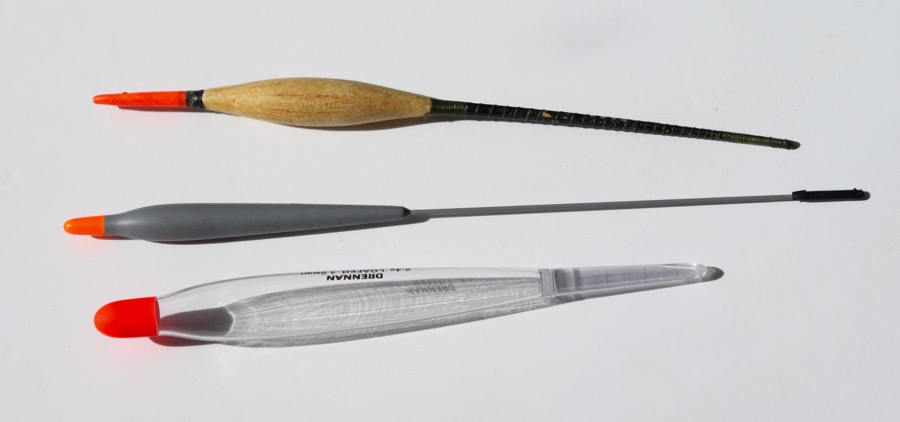
A selection of stick floats – ideal for river fishing in different conditions.
How to use a Pole float
With no need to cast far, pole floats are delicate and highly sensitive. They are held on the line with tiny rubber sleeves, like stick floats. Above, we have a slimmer pole float for slow falling baits (top), followed by a plumper bodied float for bottom fishing and last, a small “dibber” ideal for shallow margins. For close range fishing these floats also work a treat with rod and reel setups!
A great tip here is to keep things really simple with your pole floats and get some in two basic designs: slim body and chunky body. The slim float will be great for slow falling bait and delicate biters like roach and skimmers. The fatter float is ideal for deeper water and more stability.
Get some in different sizes and get a feel for where you fish. It makes sense to use the lightest float you can get away with – but a great shout is to always carry some lighter floats for perfect conditions and heavier floats for nasty conditions.
You will often find pole floats with numbers such as “4×12” or “4×16” which gives an idea of how much weight they take. Roughly speaking, you want around 0.1g (a tenth of a gram) for every foot of water. So a float of around half a gram would be fine for a five foot deep swim.
As you gain experience, however, you may want to fish lighter. Another great tip is not to limit pole floats merely to pole fishing! If you have a match rod of 12ft/4m plus, you can easily fish a pole float just off the end of the rod – and this will give you awesome sensitivity and bite detection!
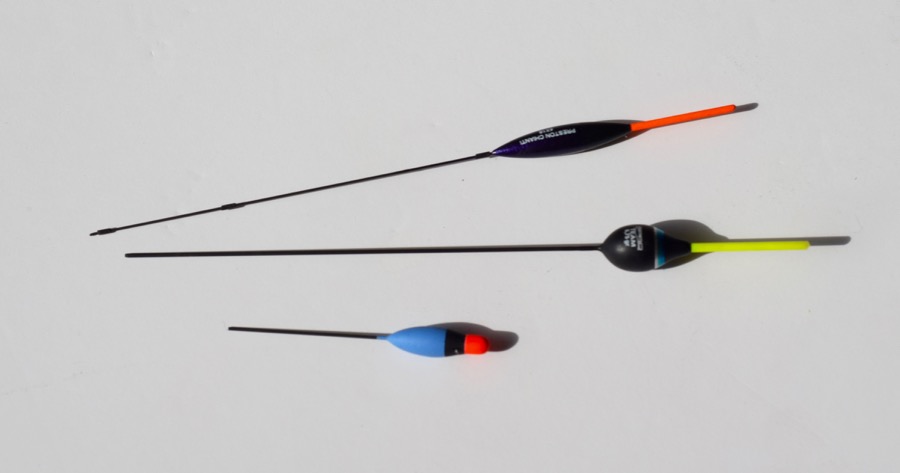
Pole floats – The slim float will be great for slow falling bait and delicate biters like roach and skimmers. The fatter float is ideal for deeper water and more stability.
How to use a Sliding float
Some species of fish demand a bigger, meatier float to support larger baits and cast further out. Pike and sea fish are good examples – ideal for casting into a wind or perhaps suspending a whole fish as bait.
Even with fish that bite less cautiously, it pays to match your float to the species and conditions. For pike, for example, a long, cigar shaped float is ideal for presenting deadbaits in still or slack water. You might need a thicker float to suspend a bait off the bottom or to deal with river currents.
For sea fishing, you may only need a half ounce float (15g) for fishing close in for wrasse, but a model taking an ounce or more would be the best way to cast fifty yards out in a stiff breeze to tempt mackerel or garfish!
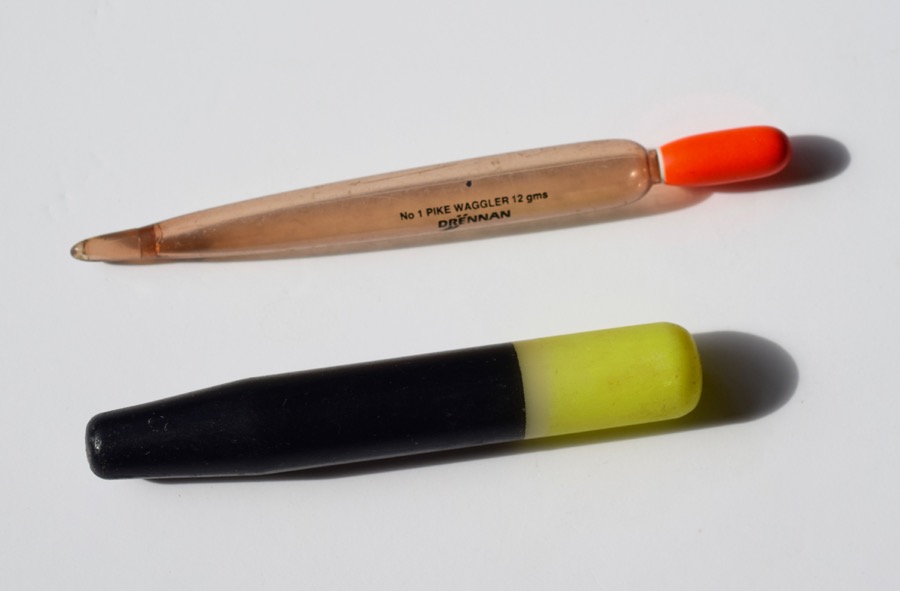
Sliding floats also have their uses – for bigger coarse fishing (such as Pike or Zander) or for sea fishing from the shore.
Tackle choices for float fishing
There are many rods marketed for various float fishing tasks these days, but what should you use? My advice would be to start by thinking about what you might like to catch. For general float fishing on rivers, canals and smaller stillwaters, a 12 or 13ft match rod will do nicely. A small reel, loaded with 3-6lb line should match this perfectly (lighter line for roach, dace and perch, or heavier for chub, tench or carp).
Quality float rods really don’t cost the earth these days. You should be able to find a perfectly useable one for under £50. For the angler who wants to regularly catch tench and carp a “power” float rod that will handle reel lines of 6-8lbs is better still. Again, at least 12 foot is preferable.
If you’re wondering why such long rods, the extra length helps in several ways. Most of all, it gives you better control, whether this means reaching out across the current or picking up all the slack line when striking into a fish at distance.
Here’s the thing though – you don’t always need to use a dedicated float or match rod to float fish. For young anglers, or those who find themselves in cramped swims, a shorter rod is often more practical. A light to medium lure rod of 9-10ft will work fine for a little float fishing.
For a spot of sea or pike fishing, a slightly heavier lure rod, or perhaps a stalking or carp rod will be ideal. I like slightly lighter tackle than the big ugly blanks and heavy reels generally shoved onto rod rests, which are a bit bulky to hold for hours. A sensible sized reel loaded with heavy mono or 20-30lb braid will stop most sea fish and pike.
Typical Float Fishing Rigs
There are many, many ways to float fish, but these basics will set you in good stead for many situations. As a good general rule, the deeper the water and the more powerful the wind and currents, the larger the float you will require.
Stick Float Rig with “shirt button” shotting
This is a typical rig for trotting a river. The evenly spaced shot give a gradual, even fall of the hookbait. The same principle often works with stillwater rigs – with a string of evenly spaced shot allowing a slow, natural fall of the bait that looks very convincing to the fish.
Bulk shot rig
If you want to get down to the bottom quicker – because it’s deep, or perhaps the tiddlers pinch your bait on the way down – a bulk of shot is the answer, this is where a number of weights are bunched together, typically around 18” from the hook. If you begin with a string of evenly spaced shot you can always slide them down the line to form a bulk if conditions change on the day.
Sliding float rig
For deeper waters and bigger fish, a sliding float is often a great idea. As the name suggests, this setup allows the float to slide up the line (unlike a “fixed” float). This means you can fish depths longer than the rod much more easily without casting problems.
Finer points and float fishing tips!
When float fishing, it always pays to pay attention to the little details! Here are four key things you can do to instantly improve your float fishing:
- Dip that tip! – Fish are not always prepared to pull inches of float underwater. In fact, many will let go if they detect too much resistance. Dot your tip down as low as is practically possible (as little as 2-3mm!) for best performance.
- Include a tell tale shot – The “tell tale” shot is a tiny weight, usually positioned six inches or less from the hook. This tiny shot is crucial because when a fish takes the bait, the weight also moves and gives you immediate bite indication. Keep your tell tale tiny (size 8-12) and close to the hook!
- Losing weight? – Shot can easily ping off while you’re fishing and will need replacing. Cylindrical weights called “styls”, often sold as “Stotz” come off the line less easily and are often a better choice than traditional shot.
- Test the depth – Float fishing is also an excellent way to test the depth. This is a vital skill to suss out where to fish on any water. Doing this properly makes a huge difference – you want your float set so that the bait is just touching the bottom at first, or just off if you are trotting a river.
Things to consider when buying fishing floats
- It’s usually cheaper to buy floats in bulk when you’re starting out. Mine tend to be bought in twos or threes so I always have spares, but bulk deals are often the best value.
- On any given day, it’s worth having floats that will cater for changing conditions. While there is a “typical” float for most scenarios, it makes sense to have a lighter model for when conditions are calm (i.e. very little wind!) and a heavier model in case you find rough weather or need to cast further. So when you are buying, get a selection.
- Use a float adapter (shown below) when waggler fishing and you can change floats in an instant should conditions change. It’s always handy having a pack of these in your tackle box.
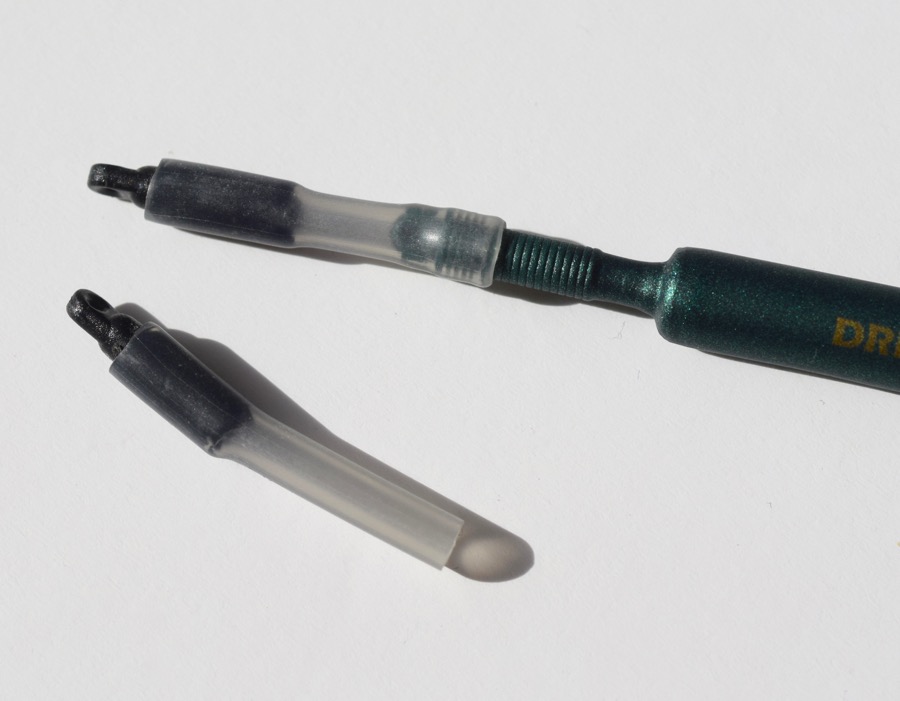
Using a float adaptor can make it easy to change to a lighter or more heavy float easily.
How to get bites while float fishing
- While a lot of float fishing means presenting the bait on the bottom, many species will occupy different layers in the water. Never be afraid to alter your depth and shotting pattern if you are not getting bites! A small change can often make a big difference.
- Bites do not always mean the float sinking out of sight. If the float lifts, or “takes a walk” sideways, you may well have a bite too, so strike! You will also sometimes get line bites from fish like carp though – where the float behaves peculiarly and you may be best waiting for a “proper” bite.
- As a general rule, it’s often best to use a float that is slightly heavier than needed. This way, you needn’t strain to cast far enough. Rather than casting onto the heads of the fish, it’s often better to cast a bit “too far” and bring the float back carefully.
- Always stay alert and fish positively. Feed bait and cast often to get more bites and explore your swim fully.
- Always hold the rod when float fishing for faster biting fish. If you put the rod down in a rest, you are not in a position to react instantly.
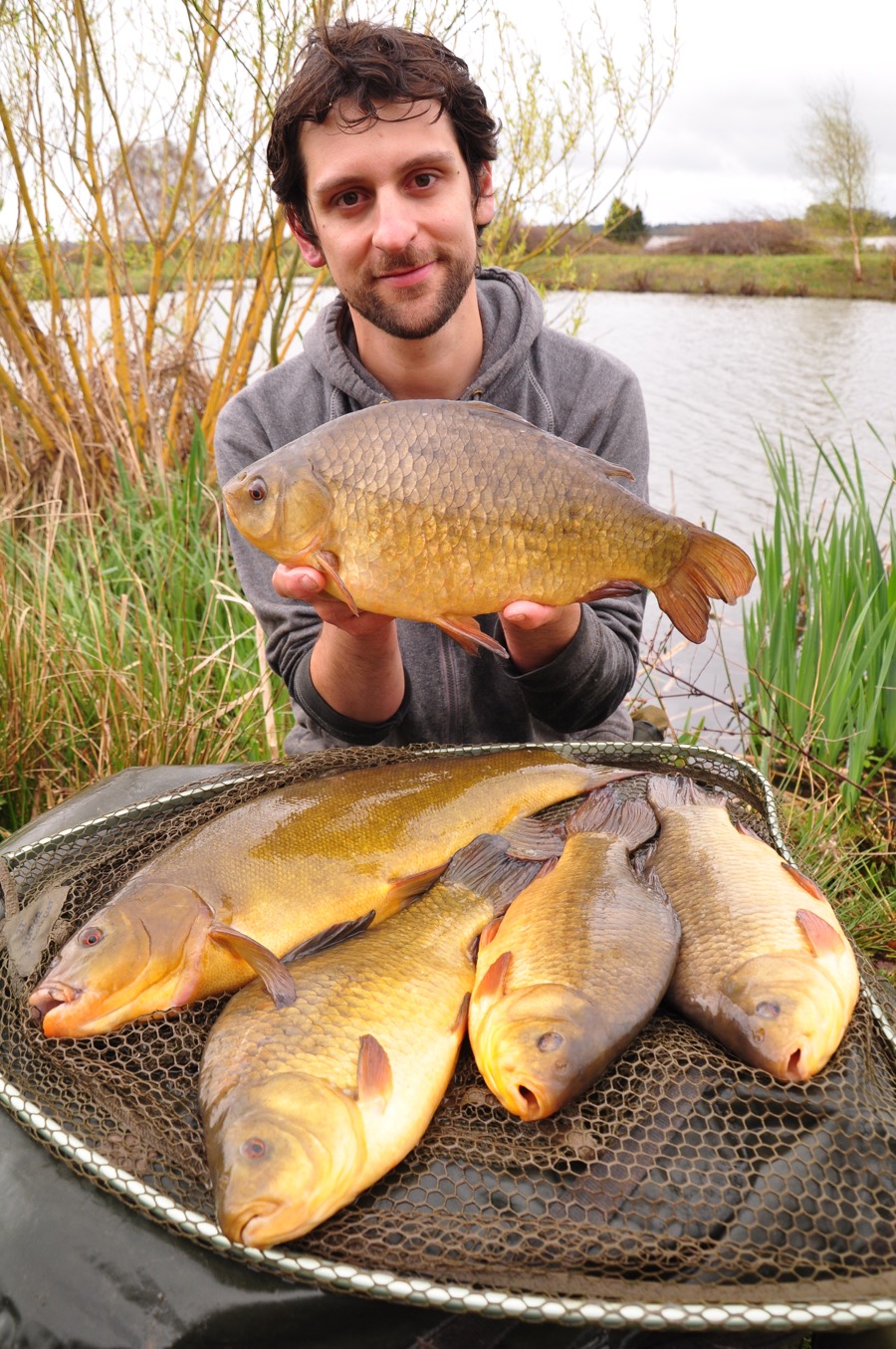
A fine bag of crucians and tench taken on running line and a finely shotted float.
Similar articles

River Fishing – A guide to getting started
Are you thinking of going for a trip to the river in 2025 but find yourself filled with trepidation because you have never fished running water before? Well I want you to relax. Let us take the mysteries out of…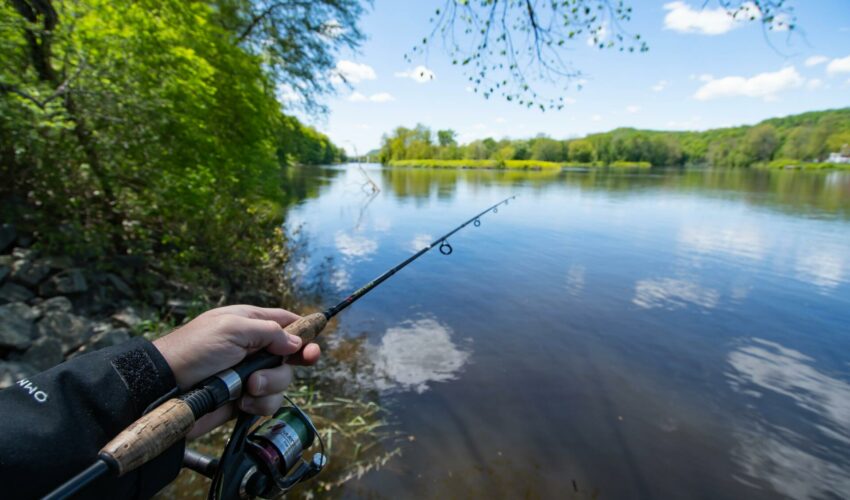
A guide to fishing licences in 2025
Whether you want to become a new angler or you’ve been fishing for years, you will be required to obtain the Environment Agency Rod Licence. In this article we explain what you’ll need if you want to go fishing in…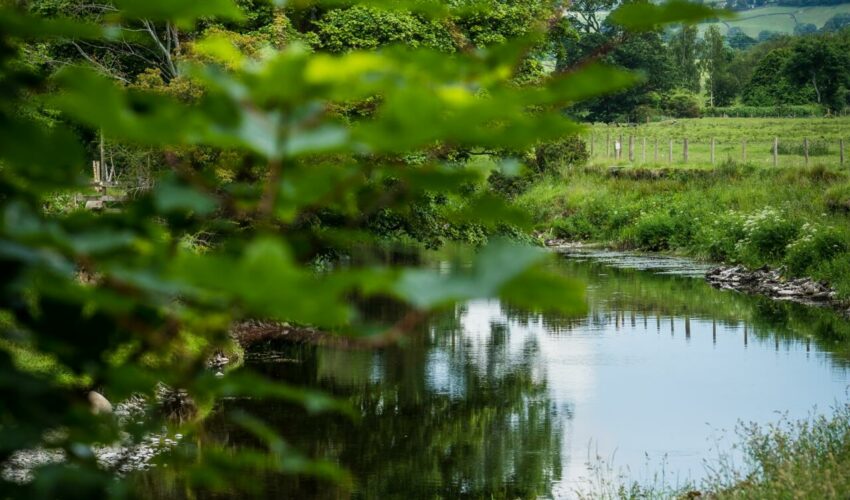
Make the most of the 2025 river season with this in-depth guide to fishing rivers
If you’re new to fishing rivers, or just fancy a change from fishing stillwaters, this guide will help you make the most of the new 2025 river fishing season. With advice on reading the water, what species to fish for…
Our guide to fishing this spring (2025)
With the worst of the weather over (we hope!) and with spring finally here, it’s time to clean out that tackle box and get on the bank for some spring time fishing.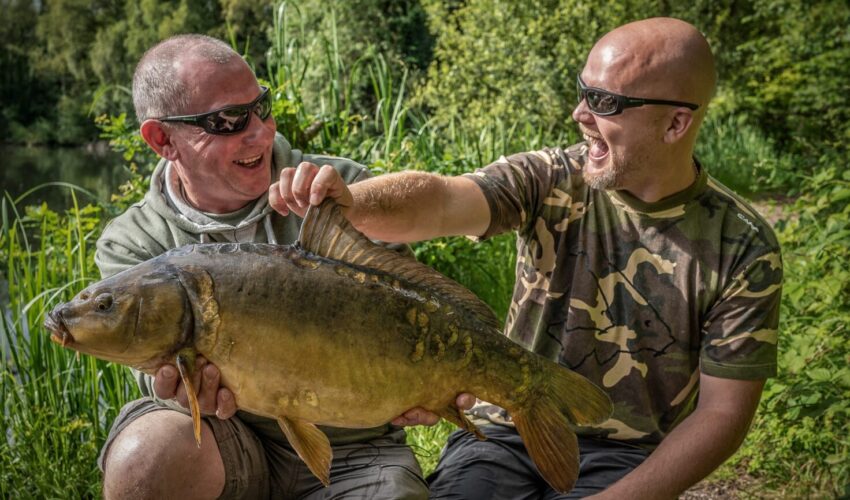
Take a friend fishing
Get ready to hit the water! From April 18th to May 4th, 2025, you can get a free fishing license to take a buddy out and show them what fishing’s all about. Yep, free! It’s all part of the “Take…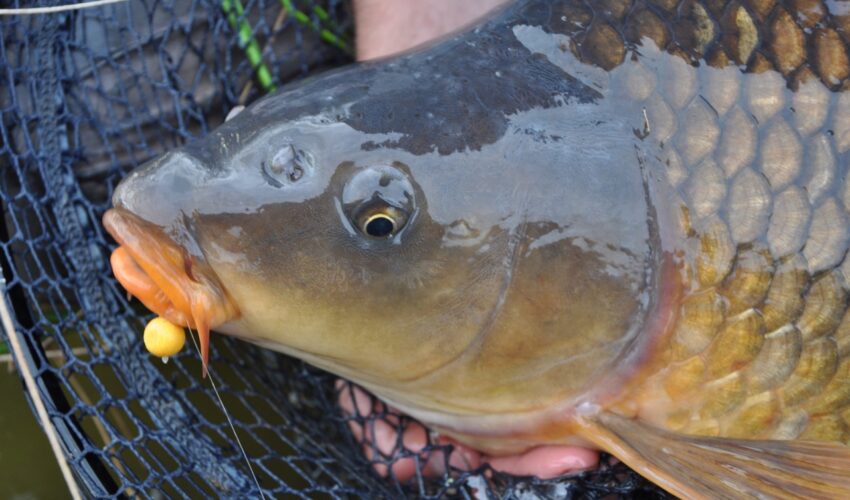
Fishing tips for hard days: How to get more bites
It happens to the best of anglers. Whether conditions are tough, the fish are moody, or our plans simply aren’t working, there are days we struggle. But what can you do to catch fish that seem unwilling to cooperate? There’s…Search by Region or County
Find new places to go fishing in your local area or county by choosing your destination below
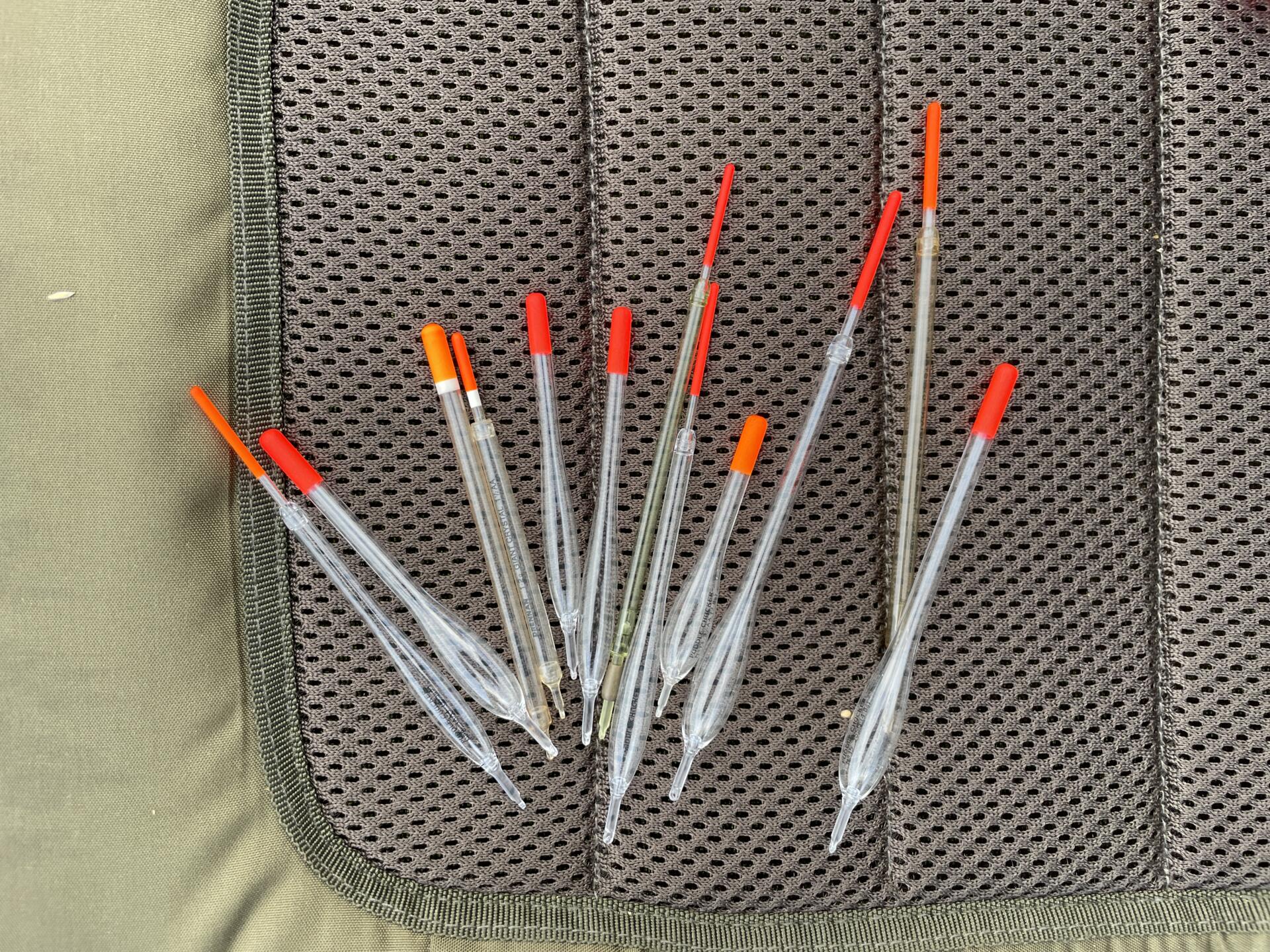









Comments